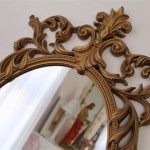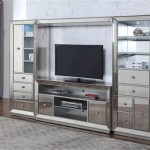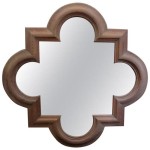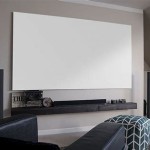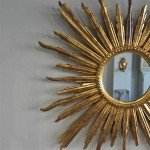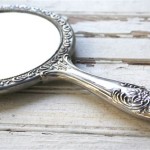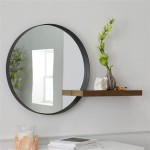Can Convex Mirrors Produce Real Images?
Convex mirrors, also known as diverging mirrors, are curved mirrors with a reflecting surface that bulges outward. They are commonly used in applications like rearview mirrors in vehicles, security mirrors in stores, and amusement park attractions. One key characteristic of convex mirrors is that they always produce virtual images, meaning the image is formed behind the mirror and cannot be projected onto a screen.
This principle is a direct result of the way convex mirrors reflect light. When parallel rays of light strike a convex mirror, they are reflected in such a way that they appear to diverge from a focal point behind the mirror. This divergence leads to the formation of virtual images.
Understanding Real and Virtual Images
To grasp why convex mirrors cannot form real images, it is crucial to understand the distinction between real and virtual images. A real image is formed when light rays actually converge at a point. This convergence allows the image to be projected onto a screen, making it physically tangible.
In contrast, a virtual image is formed when light rays appear to diverge from a point behind the mirror. These diverging rays do not actually intersect, so the image cannot be projected onto a screen and is perceived as an optical illusion. The image is a result of the brain interpreting the diverging light rays as if they originated from a point behind the mirror.
The Physics Behind Convex Mirrors
The inability of convex mirrors to form real images is rooted in the physics of reflection. The law of reflection dictates that the angle of incidence (the angle at which light strikes a surface) is equal to the angle of reflection (the angle at which light bounces off the surface).
In a convex mirror, the curved reflecting surface causes the incident light rays to converge towards the mirror's center of curvature. However, due to the diverging nature of the mirror, the reflected rays do not actually converge at a point but rather appear to diverge from a point behind the mirror. This divergence prevents the formation of a real image.
Applications of Convex Mirrors
Despite their inability to form real images, convex mirrors have numerous practical applications. Their wide field of view makes them ideal for providing a broad overview of a scene. Here are some examples:
- Rearview mirrors in vehicles: Convex mirrors in cars allow drivers to see a wider area behind them, reducing blind spots and enhancing safety.
- Security mirrors in stores: They provide a wide-angle view of a store, allowing security personnel to monitor a larger area and deter theft.
- Amusement park attractions: Convex mirrors are used in "funhouse" mirrors to create distorted reflections that entertain visitors.
In addition to these common applications, convex mirrors also find uses in scientific instruments, reflecting telescopes, and various other optical systems.
Can A Convex Mirror Produce Real Image
Can A Convex Mirror Form Magnified Image Quora
Can A Convex Mirror Form Real Image Quora
Can A Convex Mirror Produce Real Image When The Object Is Virtual And Vice Versa Concave If Yes How Will It Be Possible Why Quora
Can Convex Mirrors Produce Lateral Inversion Quora

Can Convex Mirrors Ever Produce Real Images Inverted Magnified Quora
Is It Possible For A Convex Mirror To Produce Real Image When The Object Virtual Quora

Solved Ysis Can A Convex Mirror Produce Real Images If Yes Describe How No Why Not Does Because It Only Produces Virtual For This
Can Convex Mirrors Ever Produce Real Images Inverted Magnified Quora

Real Image Wikipedia

